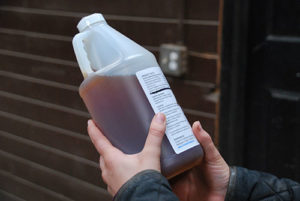
Safe Young Horse Training Practices
An equine surgeon answers a listener’s question about the safety of longeing her 2-year-old horse in this podcast excerpt.


An equine surgeon answers a listener’s question about the safety of longeing her 2-year-old horse in this podcast excerpt.

Read about how Mindful, a 21-year-old Hanoverian gelding, stayed competitive at the highest levels in The Horse‘s Older Horse 2025 issue.

Find out how the amount of time your young horse spends in turnout might affect his joint development, especially in the first years of life.

Evaluate how supplements can fit into a complete equine management program.

Tune into Ask TheHorse Live to learn how to prepare for equine health emergencies logistically and financially. Sponsored by CareCredit.

Veterinarians can guide horse owners in choosing supplements by assessing diet first, identifying the horse’s needs, and then recommending evidence-based ingredients.

Giving horses sufficient time to recover from athletic events could help them avoid acute injury and long-term health problems. Read more in The Horse‘s Older Horse 2025 issue.

In this Ask TheHorse Live podcast episode an equine surgeon answers listener questions about joint care in young horses. Sponsored by Dechra.

Veterinarians administer risk-based vaccines based on a horse’s potential to contract certain diseases.

Respiratory viruses affect more horses than you might think, raising important questions for veterinarians and owners about diagnosis, management, and performance.

Slow, progressive exercises help improve a horse’s strength and stability when recovering from this neurologic disease. Read more in The Horse‘s Spring 2025 issue.

How can horse owners keep their animals fit and active without accelerating the joint degeneration process? Dr. Katie Ellis weighs in.

Find out how Dr. Katie Ellis manages joint pain in a horse with degenerative suspensory ligament desmitis in this excerpt from Ask TheHorse Live.

Dr. Katie Ellis and Dr. Howland Mansfield discuss what imaging modalities veterinarians might use to accurately diagnose joint disease in horses.

Dr. Katie Ellis describes how equine veterinarians select orthobiologics to treat osteoarthritis in horses, and the pros and cons of using each type.

Horses with EMS are often overweight or obese and also at an increased risk of developing laminitis. Implement these 5 strategies to manage your EMS horse more effectively.
Stay on top of the most recent Horse Health news with